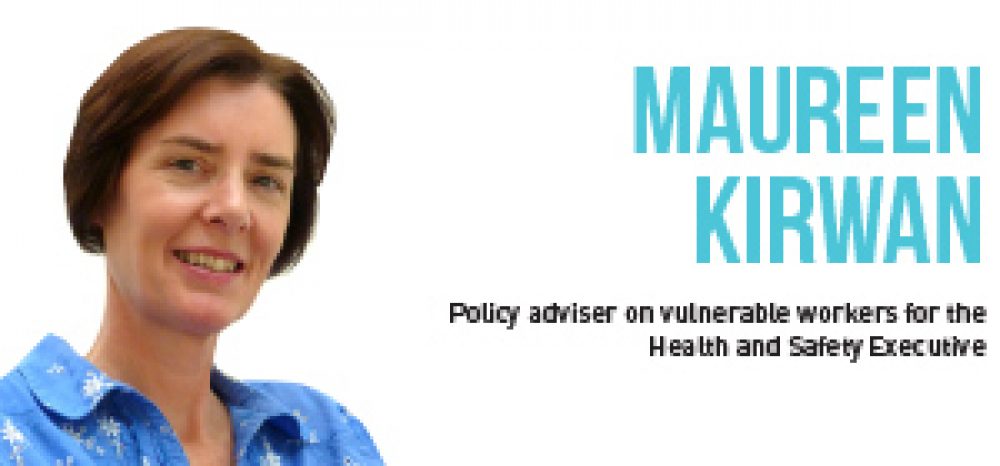The importance of work experience in developing skills has been reinforcd by no less than Ofsted and the UK Commission for Employment and Skills. But providers and employers often worry about the health and safety implications in allowing learners into the workplace, so Maureen Kirwan asks whether the sector is at risk of playing it too safe.
Introducing young people to the world of work is an invaluable part of their education. But what about ‘health and safety’?
Understanding risk and how to deal with it can be one of the biggest benefits offered by a work experience placement. Guidance from the Health and Safety Executive (HSE) supports the provision of more and better-quality placement opportunities across the world of work, including in well-managed higher-hazard workplaces, where that fits the learner’s chosen vocational or career path.
The health and safety administration around work placements can be seen as over-bureaucratic and burdensome. That’s why HSE is tackling the misconceptions that stop young people benefiting from rewarding work experience.
Many employers have considerable experience of successfully employing young people or taking on work experience students. They should already be managing the risks in their workplaces and are best placed to assess whether or not they need to do anything additional for a new young person joining them.
But employers regularly face requests for additional paperwork, and see providers either duplicating their risk assessments, or coming into the workplace to do their own independently. This is unnecessary.
It’s important to emphasise that there is a degree of collaboration needed between providers and employers to make sure they get this right. Uncertainty about who should be doing what can lead providers to rely too heavily on paperwork and ‘box-ticking’ rather than asking the right, focused questions to ensure that the necessary protections are in place.
So how does a provider satisfy itself that an employer is doing what’s needed? Where an employer is new to taking on learners for work experience, talk through what they will be doing. It may be helpful to make a note of the conversation.
Checks should be kept in proportion to the environment. In a low risk environment, such as an office or shop with everyday risks that will mostly be familiar to the learner, simply speaking with any new employer to confirm this should be enough.
For higher-risk environments, or those with less familiar risks, the provider should talk to the employer and confirm the arrangements for managing risks. This will need to include induction, supervision and provision of any protective equipment that might be needed. A provider will want to satisfy itself that the instruction, training and supervisory arrangements have been properly thought through and that learners know how to raise any health and safety concerns.
A provider can rely on past experience, or pooled experience, for example within the local authority area. They do not need to do it all again for a new student where an employer is known to them, has a good track record, and the student’s needs are no different to those of students on past placements.
Providers should work with parents to ensure employers know in advance about learners who might be at greater risk, for example due to health conditions or learning difficulties, so they can take these properly into account.
Our work experience guidance lays out the legal requirements, explains what’s needed (and what’s not), and clarifies health and safety roles and responsibilities for those involved in taking on young people under 18 for work experience.
Following the guidance means you will meet the requirements of health and safety law in respect of young people. The principles can also be applied to taking on learners who are 18 and over, who are new to the workplace or who are inexperienced and lack awareness of risk.
Since we published guidance last year, a steady stream of cases have been added to our Myth Buster Challenge Panel, suggesting providers are still burdening themselves and employers with a ‘paper chase’ on this topic.
Check out what you need to do — and who knows? Maybe you’ll save yourself some time.
The HSE is carrying out a survey on its guidance on young people. Click here to take part.









Your thoughts